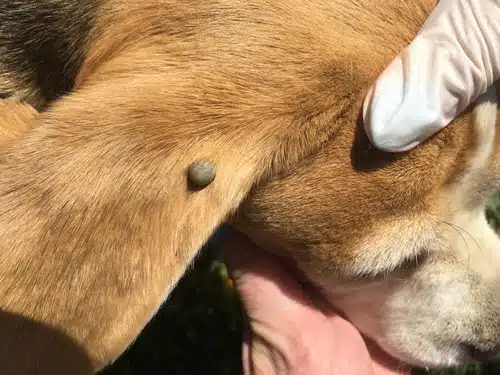Home » Blog » Pet » Pet Health & Safety » A Guide to Tick Paralysis in Dogs and Cats
Categories
Tags
animal welfare
breed profile
buying a car
buying a pet
Car
car accessories
car care
car features
car insurance
Car safety
car sales
car service
cat
cat behaviour
cat body language
Cat Breeds
cat food
cat insurance
comprehensive car insurance
Dog
Dog Behaviour
dog body language
Dog Breeds
dog food
Dog Insurance
dog training
eco friendly cars
Kitten
New Car
pet accessories
pet activities
Pet Adoption
pet breeders
pet days of the year
pet fun stuff
Pet Health
pet insurance
pet parenting
Pet Safety
pet services
Puppy
rescue pets
road safety
road trip
safe driving
Recent Blog:
Facebook Posts
1 day ago
True or false: A stiff brake pedal can stop your car from starting? Answers here…![]()
![]() 3 Reasons For a Stiff Brake Pedal and Car That Won't Start –
... See MoreSee Less
3 Reasons For a Stiff Brake Pedal and Car That Won't Start –
... See MoreSee Less
3 Reasons for a Stiff Brake Pedal and Car That Won't Start
www.pd.com.au
Help! My car isn't starting and the brake pedal is stiff - why?! First of all, if your brake is stiff and car won't start then you've already pieced3 days ago
Growing old sometimes means we can’t take care of pets anymore. Find out some advice on what to do when this happens:![]()
![]() Senior Pet Parents – Contingency Plans for Your Pet –
... See MoreSee Less
Senior Pet Parents – Contingency Plans for Your Pet –
... See MoreSee Less
Senior Pet Parents' Contingency Plans for Pets
bit.ly
Sometimes senior pet parents need more downtime. For older pet owners, this can be tricky to navigate if their dog or cat is full of beans and wants to5 days ago
Celebrating World Vet Day by expressing our gratitude to all the wonderful vets out there! You're the real heroes for our fluffy companions. #WorldVetDaye#ThankYouVetsu#PDPetsdpets
... See MoreSee Less
As you may have seen from news reports, tick paralysis in dogs and cats is spiking at an alarming rate across Australia. The rise in health cases due to paralysis ticks has resulted in a nationwide shortage of the tick antiserum. This potentially life-saving product is used by vets to treat paralysis in pets.
Australian Veterinary Association member Peter Irwin told ABC News that the recent wet and warm weather on the east coast is causing an “explosion” of paralysis tick numbers.
Lack of prevention measures
Pet owners are being urged to pay attention to prevention rather than cure, to recognise the importance of giving pets tick control medication. The education effort is certainly needed. Just under half (48%) of dogs living in areas where paralysis ticks are more prevalent are on tick control, according to statistics from the Australian Paralysis Tick Advisory Panel.
It’s no wonder more than 75,000 dogs and cats across Australia are affected by tick paralysis every year, with many dying.
This article unpacks what tick paralysis in dogs and cats is, the symptoms to look out for and how to prevent this potentially life-threatening disease.

What is tick paralysis in dogs and cats?
Tick paralysis in dogs and cats is a progressive disease that attacks their nerves. It’s caused by a tick called the Australian paralysis tick. When this tick attaches itself to dogs, cats and even people it excretes a toxin from its saliva into the bloodstream.
Paralysis usually starts in the pet’s hind legs. If it’s not treated it can cause complete paralysis in both legs. Tick paralysis in dogs and cats can also cause respiratory or heart failure and potentially death.
The paralysis tick is greenish-grey in colour. The size of it suggests how long it has been on your pet for and how much blood it has fed on. While the paralysis tick is found across Australia, it’s more common in dense bushland along the east coast. Sydney’s North Shore and Northern Beaches areas are said to have some of the highest incidences of it.
Another tick-borne disease that can be fatal to dogs and cats alike is ehrlichiosis. It’s a bacterial infection which attacks the immune system and in Australia the main carrier is the brown dog tick.
Symptoms of tick paralysis in pets
The initial signs that a paralysis tick may have attached itself to your pet include trouble walking or jumping and a lack of coordination. Other symptoms include:
- A loss of appetite
- Difficulty breathing with grunting noises
- A distinct change in your dog’s bark or they may stop barking altogether
- Weakness
- Coughing
- Developing paralysis in their face, causing them difficulty in blinking
If you find a tick, remove it if you can (read about how to remove a tick properly). Save it in a sealed jar and mark the area where you removed it from. This will help your vet check for further infection.
How a vet diagnoses tick paralysis
Tick paralysis is a neurological disease that develops at a rapid speed, so schedule a vet check-up as soon as your dog shows symptoms.
A vet will do a physical examination of areas known for ticks and tick-borne disease to check for any attached ticks. If a paralysis tick or a tick crater (skin lesion) is found, this along with the symptoms your pet’s showing will indicate your fur kid is suffering from tick paralysis.
Blood tests help to check for tick paralysis side effects and for other causes for the symptoms.

Treatment of tick paralysis
Removing the tick is the first step to treating tick paralysis in dogs and cats. If you haven’t done it already, your vet will remove the tick’s mouthpiece to stop the spread of toxins.
They’ll then use an anti-tick serum to neutralise the paralysis tick’s toxin. This solution will be slowly injected into your pet via an intravenous catheter. Pets with tick paralysis also need sufficient fluids, nutrition and may be put on a ventilator. To kill any other hidden ticks they may be given a preventative medication too.
If a dog or cat needs help breathing they’ll stay in hospital until they’re stable. Severe breathing problems may cause permanent damage to a pet’s lungs. This will mean they need to take chronic medication and will need to reduce their exercise in future. The extent of this need will depend on the extent of damage.
Prevention is far better than cure
Prevention of tick paralysis is even more important now, considering the nationwide shortage of the anti-tick serum. There’s no vaccine for this disease, but there’s a wide range of flea and tick preventatives you can use to protect your pet.
It’s wise for flea and tick treatment to be a part of routine pet care throughout the year. If you live in a high-risk area where paralysis ticks are common it’s advisable to use more than one method.
For example, you could try a tick collar and a regular preventative treatment such as Bravecto. Check your pet regularly for ticks regardless, especially during “tick season” in spring and summer. If you do notice any ticks, remove them immediately and keep a close eye on your pet.

How to check your dog and cat for ticks
Even if your pet is on a tick preventative it’s important to do a daily physical check. Here’s what to do:
- Feel for any bumps on your pet’s skin by gently running your fingertips through their coat.
- Start the examination at their head and neck. Don’t forget to check the mouth and ears, moving down the body.
- Remember to also check between and under the toes.
- Ticks also tend to hide under the collar so be sure to remove this when examining your pet’s body.
Pet insurance can help with all kinds of vet bills
If you suspect your dog or cat has contracted tick paralysis, schedule an urgent check up with your vet. You don’t want to wait due to uncertainty then regret it later – better safe than sorry.
This applies to a wide range of illnesses and injuries. Having pet insurance already in place with PD Insurance can help ease the financial stress that comes with lots of these, helping to ensure your pet gets the best care. Check out our pet insurance here. What do you have to lose?
Share On:




